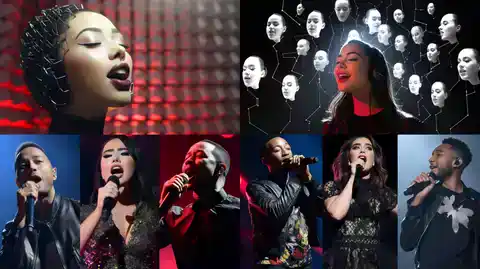Table of Contents
Is it genuine or is it YouTube’s automated singer imitating a vocal artist’s pop techniques?
YouTube has revealed its latest AI music experiments in collaboration with Google’s DeepMind artificial intelligence lab. Among the most intriguing of these experiments is Dream Track, which is part of YouTube Shorts.
The process is simple: users input their ideas into the creation prompt and choose participating vocal artists, and the AI generates an original song snippet up to 30 seconds long with the artist’s voice.
YouTube has enlisted the help of popular vocal artists such as Charli XCX, Charli Puth, Troye Sivan, and Sia to lend their voices to an experimental tool that allows users to create songs using their vocals through a text prompt.
Currently, the tool is only accessible to a select group of 100 users. This development comes as the music industry grapples with the potential benefits and drawbacks of Artificial Intelligence.
YouTube has partnered with a group of nine vocal artists who have come together to collaborate on the Dream Track experiment. These talented individuals include Alec Benjamin, Charlie Puth, Charli XCX, Demi Lovato, John Legend, Papoose, Sia, T-Pain, and Troye Sivan.
In a statement, Lovato expressed that the advancement of AI technology is swiftly transforming the way we interact with our surroundings, and artists must contribute to shaping the direction of this future.

YouTube’s unveiling AI-powered features
YouTube has unveiled an AI-powered feature that enables users to mimic the singing style of popular vocal artists such as Demi Lovato and John Legend.
The software introduces a new feature known as Dream Track, enabling users to compose brief musical compositions by specifying elements such as lyrics and mood. Several notable artists, including Charli XCX, Troye Sivan, T-Pain, and Sia, have consented to having their voices “cloned” for this experimental feature.
Currently, approximately 100 creators in the United States have been granted access to this tool, exclusively for creating soundtracks for videos on YouTube Shorts, which competes with TikTok.
The corporation unveiled a pair of demonstration videos produced using Dream Track, showcasing mediocre renditions of Charlie Puth and T-Pain that were noticeably subpar.
The prompt inspired the creation of a Puth track, which is an upbeat acoustic ballad that delves into the idea of how opposites attract.
Vocal artists experiment and results
The end result gives off the impression of a low-grade MP3, brimming with digital distortions. Puth’s voice occasionally seems “smudged,” with certain consonants becoming muddied and difficult to discern.
The song bears a distinct resemblance to his R&B-infused pop hits, and the lyrics, though lacking in depth, are fitting: “Darling, we may not have much in common / But I’m the one you’ve been searching for.”
In a blog article, the head of music at YouTube expressed that the purpose of the tool was to “experiment, acquire knowledge, receive feedback, and listen to ideas” from both vocal artists and viewers.
Lyor Cohen Investigation and Evidence
Lyor Cohen stated that the experiment’s primary objective is to investigate the potential of the technology in establishing stronger bonds between artists, creators, and their supporters during the initial stage, who have previously assisted in the successful launch of artists such as Run-DMC and the Beastie Boys.
The release occurred a mere 24 hours following YouTube’s announcement of its intention to notify viewers when they are watching a video created using artificial intelligence.
The company owned by Google also announced that individuals will have the option to ask for the deletion of videos that employ artificial intelligence to imitate a recognizable individual.
Dream Track stands out from the rest due to its unique feature of having the explicit endorsement of the artists involved. However, this contrast highlights a broader discussion surrounding the role of AI in the YouTube creative sectors.